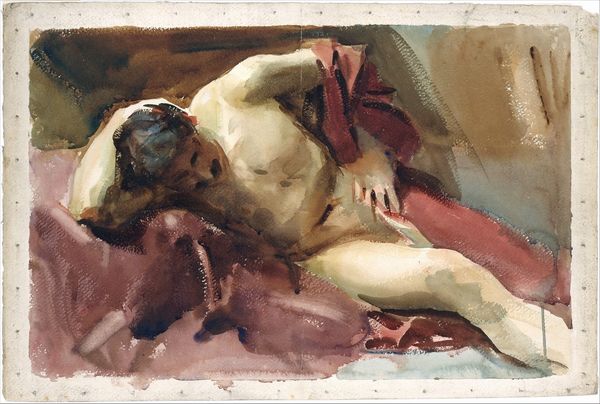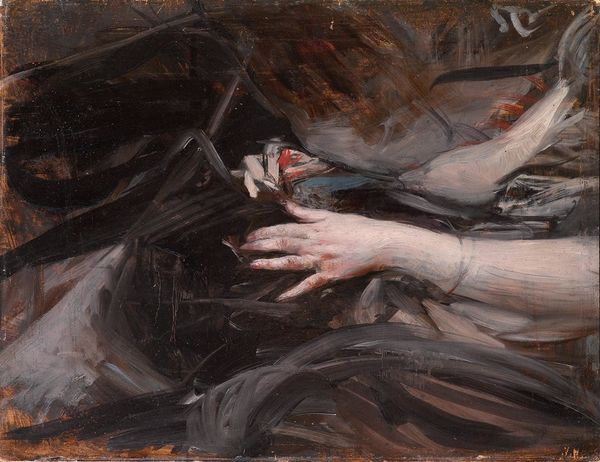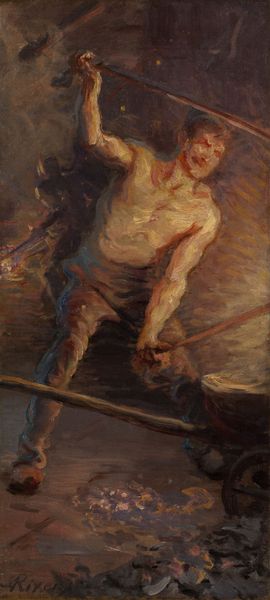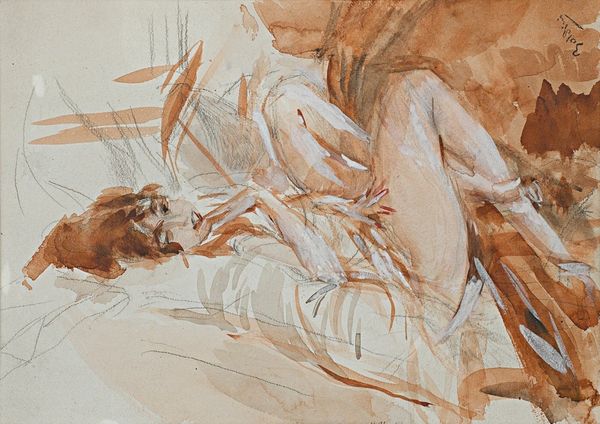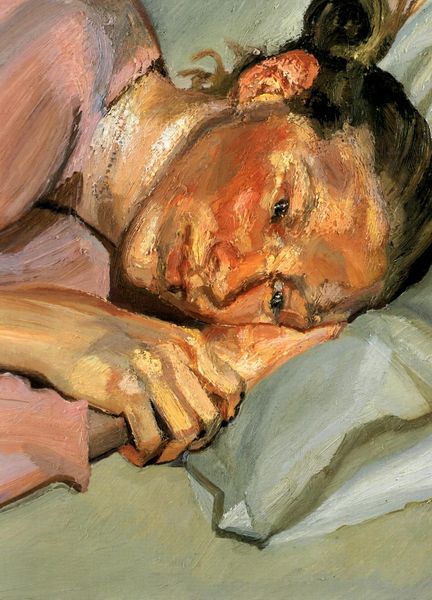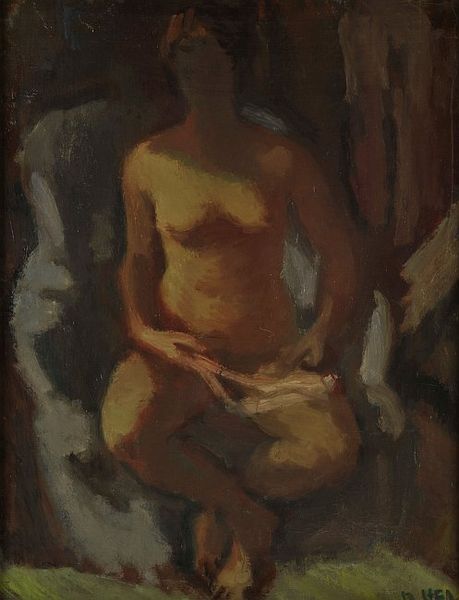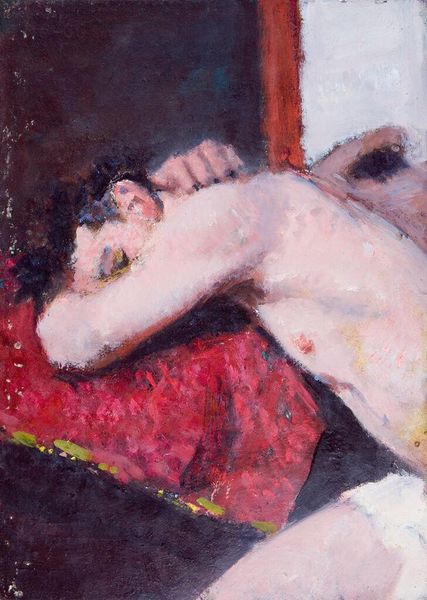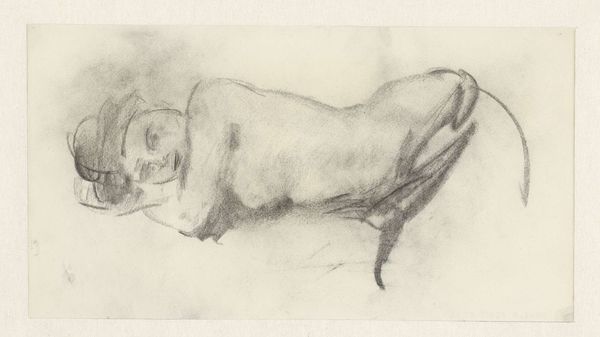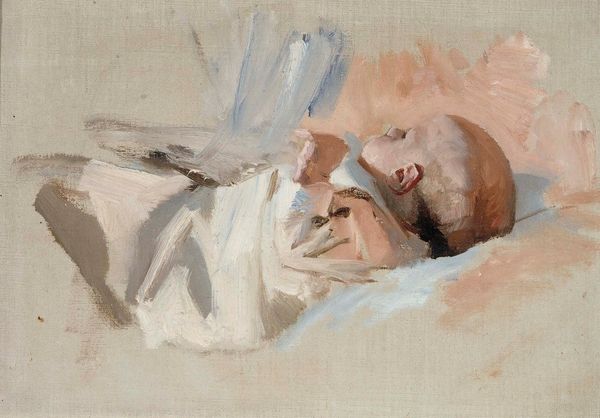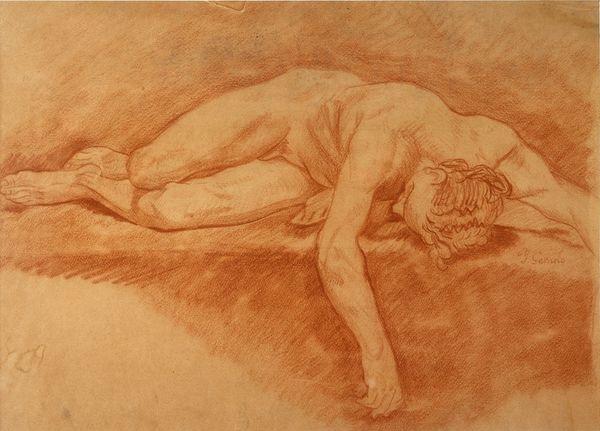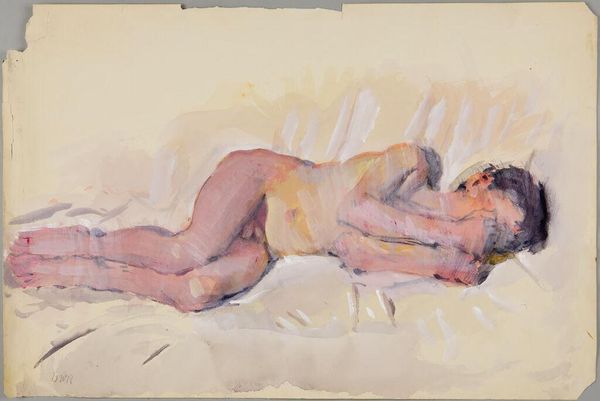
Copyright: Public Domain: Artvee
Curator: Here we have Wilhelm Kuhnert's "Schweinsaffe," painted around 1905 using oil on canvas. Editor: Wow, the first thing that strikes me is this incredible sense of vulnerability. It's like looking at a tired, old soul. Curator: Kuhnert, celebrated for his animal paintings, was dedicated to a mode of Realism that actually required a very intimate familiarity with his subjects in their own habitats. I'm wondering how you might perceive this “vulnerability” in terms of the artist's actual production here. Editor: Well, the pose is almost human, isn't it? It's splayed out on what appears to be a bed, this sort of liminal space between animal and human domains—suggesting a level of sentience, even a kind of existential weariness in that open-eyed gaze. It makes you think about our relationship to the natural world and the burden of consciousness. Curator: True. And consider the historical context. Colonial exploitation meant European artists could travel and portray animals as commodities but Kuhnert also published extensive sketches of the process involved in colonial zoological displays, which might indicate his ambivalence about that practice. Look closely at how he uses a relatively restrained palette— mostly browns, creams, and muted pinks to really emphasize form and texture, and subtly critiques this very objectification of the subject as an example for both science and sport. Editor: You’re so right. And isn’t there an underlying tenderness—an attempt, maybe, to imbue a common subject with uncommon dignity? I mean, "Schweinsaffe"— "Pig-Tailed Macaque." Not the most flattering title, yet the composition offers the animal such repose. Curator: Indeed. Kuhnert used a series of rapid sketching processes to study animal behaviors which informs both their perceived wildness and that moment of interiority as translated through brushstrokes of thick impasto. Editor: I suppose for me this speaks not only of exploitation or even observation but something about our own interior selves as reflective beings caught on canvas in fleeting moments of vulnerable honesty. Curator: That’s lovely—a pertinent reminder of art's ability to reflect back on our human condition even through an unexpected subject. Editor: It is… Food for thought!
Comments
No comments
Be the first to comment and join the conversation on the ultimate creative platform.
